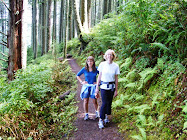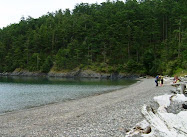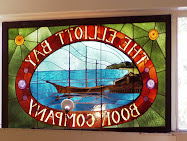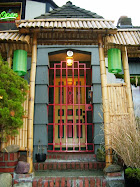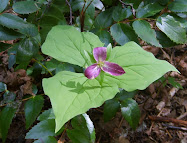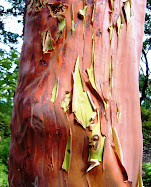Shinrin-yoku means bathing in the forest atmosphere, or taking in the forest through our senses. According to a 2016 study, forest bathing significantly reduced pulse rate and significantly increased the score for vigor and decreased the scores for depression, fatigue, anxiety, and confusion of the participants.
Not that I needed to be told all those years hiking through Pacific Northwest forests have been good for me.
But with the explosive growth here, which has spilled over to hiking and all things outdoorsy (thank you social media), the hikes I used to take to mountaintops and spectacular views are being overwhelmed. These days, I often head to forest trails that don't particularly lead to a summit or lake.
And I especially relish our lush forests west of the Cascades, where the ground and trees are carpeted in moss and ferns along with other native shrubs. Things grow in a western forest, often abundantly.
And when trees fall in the forest, lots more things grow on "nurse" logs. It's a big symbiotic chain reaction.
I've been reading The Hidden Life of Trees, and it raises interesting questions: Are trees sentient beings? Do they have feelings? Do they communicate with each other?
While we can't know for sure whether trees possess self-knowledge, the reactions of trees to various conditions and events is indeed real. And they do indeed communicate and support each other in a forest.
As the author concludes: A happy forest is a healthy forest. And I firmly believe that a healthy forest is a healthy place for people to pass through, with respect. Or, as John Muir said, more loftily:
“The clearest way into the Universe is through a forest wilderness.”
I've done many forest hikes over the years and a few recently. Sometimes, like this past weekend along the Salmon River east of Portland, I stop and just sit in silence in the woods, breathing deeply and inhaling the richness of life all around.
Sweet wildflowers sprout beneath trees and along the trail in the spring and summer. As I noted in my last blog post, trilliums are a favorite and still peaking. And this past weekend I was especially enchanted by the abundance of delicate fawn lilies, with mottled leaves resembling the back of baby fawns.
 |
| Trillium ovatum |
 |
| Oregon fawn lily (erythronium oregonum) |
- For a lowland forest walk near Seattle, try Japanese Gulch or Big Gulch trails in Mukilteo, WA.
. - I've read that the Crater Loop Trail at Larch Mountain east of Portland, OR, has re-opened. However it has suffered from lack of trail maintenance during its prolonged closure after the Gorge fire in 2017. Proceed with caution!
- Downey Creek Trail outside Darrington, WA, in the North Cascades is reliably quiet. Might have something to do with the 15 miles on rough road to get there.
Happy trails and thanks for visiting Pacific Northwest Seasons!
In between blog posts, visit Pacific NW Seasons on FaceBook, Twitter, andInstagram for more Northwest photos and outdoors news.
When You Go
Check to see if a parking pass (Northwest Forest Pass, Discover Pass) is required for trailhead parking. And think about taking an extra big bag for picking up trash you find along the way, which sadly is not that uncommon these days. Also think about being quiet rather than talking loudly; focus on absorbing your surroundings. Enjoy!




























































